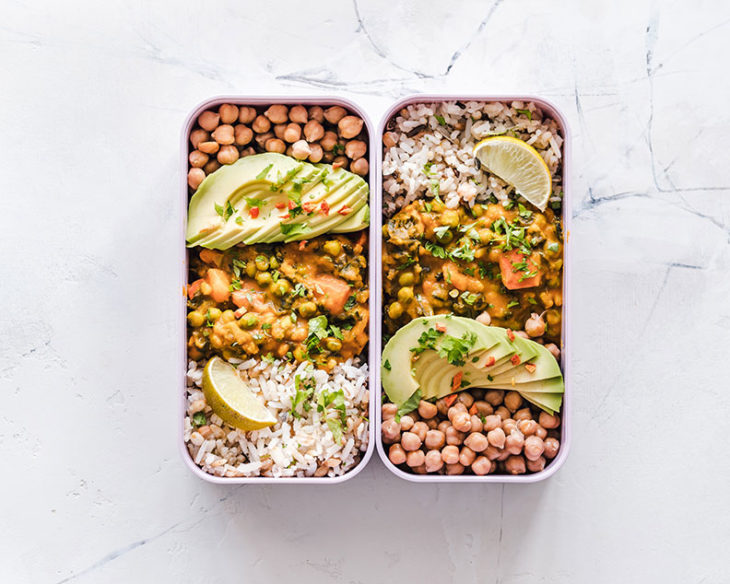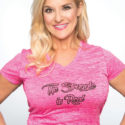Meal prep can help you avoid unhealthy options, reduce overeating and, yes, save money on eating out. You can stop stressing about what you’re going to eat during the work week and start reaching your nutritional goals with each meal. Studies have shown that because meal prep requires you to determine what you will eat ahead of time, it can lead to healthier habits.
Here are some steps for cooking, portioning and storing your meals:
STEP 1 —STICK TO A SCHEDULE
Pick one day each week to do your meal planning and prep, shop for groceries and cook (yes, all in one day). After you have planned your menu and made your grocery list, it’s time to put your plan into action. Once you get accustomed to the process and find recipes you like, you will cut time spent in the kitchen. After a few hours from start to finish, I am prepared for the entire week.
STEP 2 — PICK THE RIGHT NUMBER OF MEALS
Determining how many meals to cook and what to include in each can be tricky. Check your calendar and account for times you likely will eat out, then decide the number of breakfasts, lunches and dinners you will need. If you have any leftovers come midweek, you can freeze them for backup meals.
STEP 3 — ORGANIZE YOUR PREP AND COOK TIMES
A well-thought-out meal prep workflow will save you time. This is when I turn up the music while I start prepping.
Prepare sheet pans — I pull out all the pans I will be using and either spray them with coconut oil spray or foil them.
Marinate proteins — I am from New Orleans and always want seasoning and spices to come through in my cooking. I use Flavor God, Tony Chachere’s salt-free seasoning and other salt-free options on my proteins. If I use fat-free salad dressing or other marinades on my meats, I put them in the refrigerator.
Wash and chop vegetables — This is the longest part of my process and a perfect time to turn up some favorite tunes. I wash all my vegetables, chop them, then portion out those I may need for a specific recipe. My mother shared a roasted vegetables recipe with me, and I love cooking asparagus, roasted cauliflower or anything I can make on a sheet pan in the oven. I also package spinach and kale for my salads and put them in plastic bags for the week. I cut up cucumber, celery and tomatoes for salads, portioning out my servings in small containers. While I’m finishing the veggies, I preheat the oven. I hardly cook on the stovetop at all; baking my food in sheet pans has become my sweet spot.
STEP 4 — GET COOKING
My oven has been preheated, and now I’m ready to get cooking.
I cook proteins first because they take the longest. My staples include chicken; fish (my favorites are red fish and tuna steaks); flank or sirloin steak; turkey, beef or bison burgers; and meatloaf.
Next up, vegetables. I put asparagus on a sheet pan, vegetables to be roasted in a large, deep pan and cauliflower on a thinner, cookie baking pan. I can cook all my proteins at once, vegetables next, and sometimes, I can get my egg soufflé cups in the oven with the vegetables.
Egg soufflé cups are one of my favorite and easiest meals to prep — and so delicious. I spray a muffin pan, then mix egg whites, a few brown organic eggs and whatever veggie I have a surplus of — usually spinach and tomatoes. I combine it well and pour nice, full amounts into the muffin pan. After 30 minutes, I have two cups for each morning.
I cook brown organic rice and sweet potatoes in the microwave while I am making my vegetables. Once they’re cooked, I let them cool with the other foods.
STEP 5 — PORTION YOUR FOOD OUT AND PUT IN STORAGE CONTAINERS
This part is just as important as cooking.
Your food storage containers can make the difference between a fabulous or so-so meal. I have tried many containers and found one I love. Ello’s fun, colorful food containers are made of glass and silicone for durability and have airtight locking lids, which I love as much as the pink and teal colors they come in. They keep your food fresh and are microwave and oven safe, even with the lid off.
Now you’re ready to portion your food. I have a great digital food scale and after measuring my food, I weigh it to ensure I am getting the exact nutrition I need from each meal and not eating excessive portions. I recommend you do the same because it’s the only way to be accurate. I portion proteins first, then vegetables, then carbs, and for dinner, I double the vegetables and don’t eat starches. My breakfast egg cups are easy; I have two per day so, I keep them in one container for the week.
Now you just grab your meals, warm up and bon appetite!



